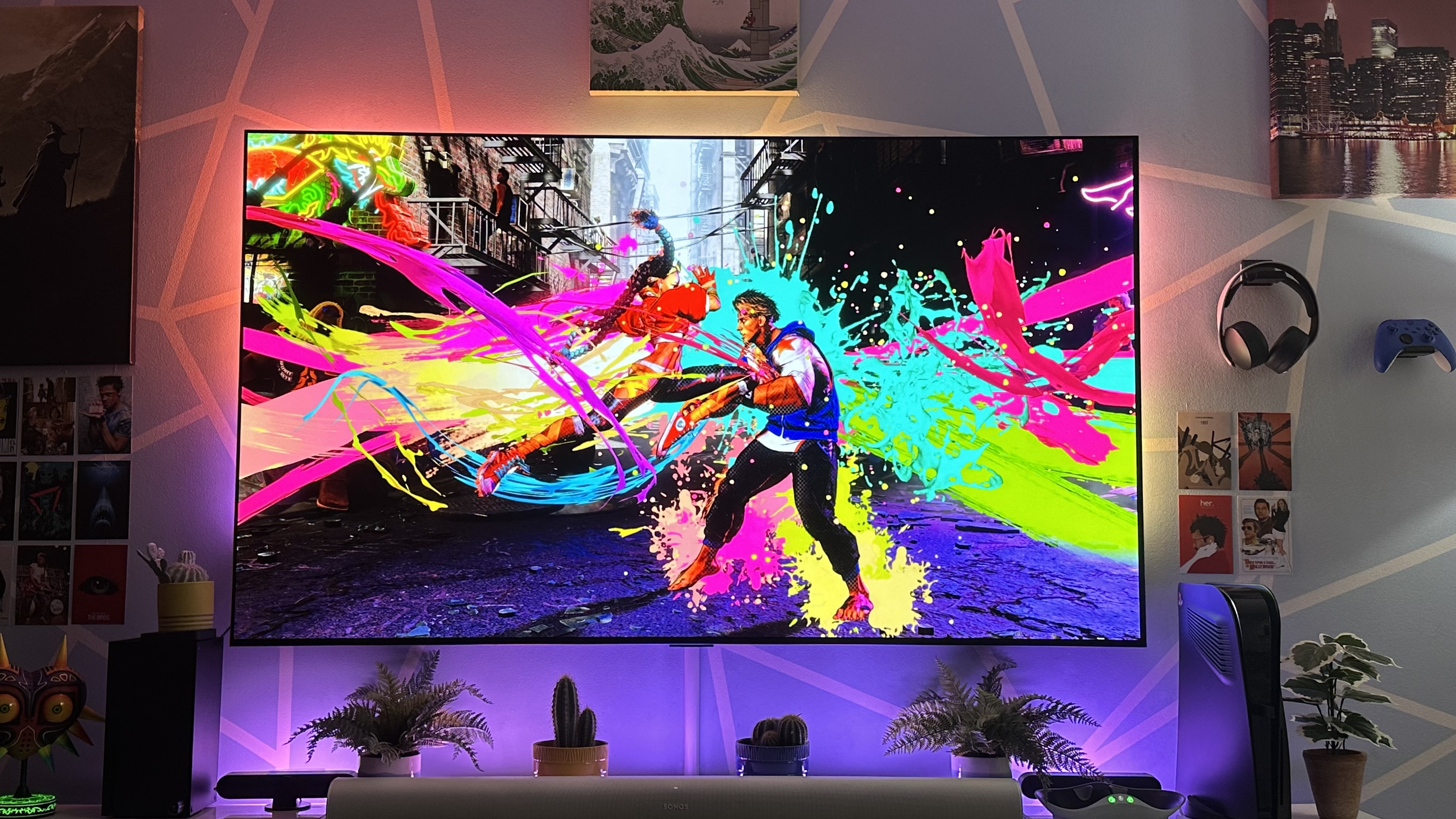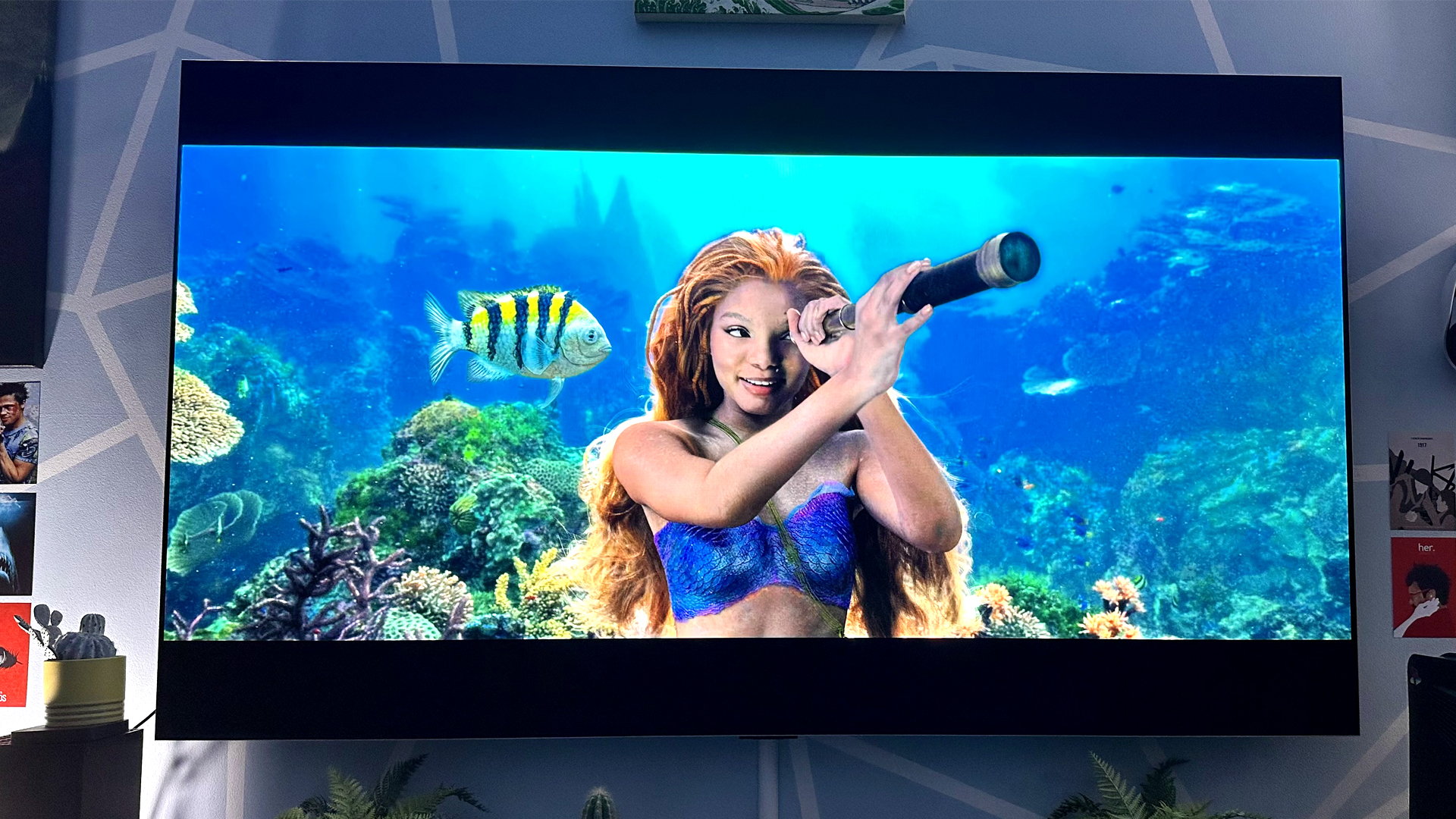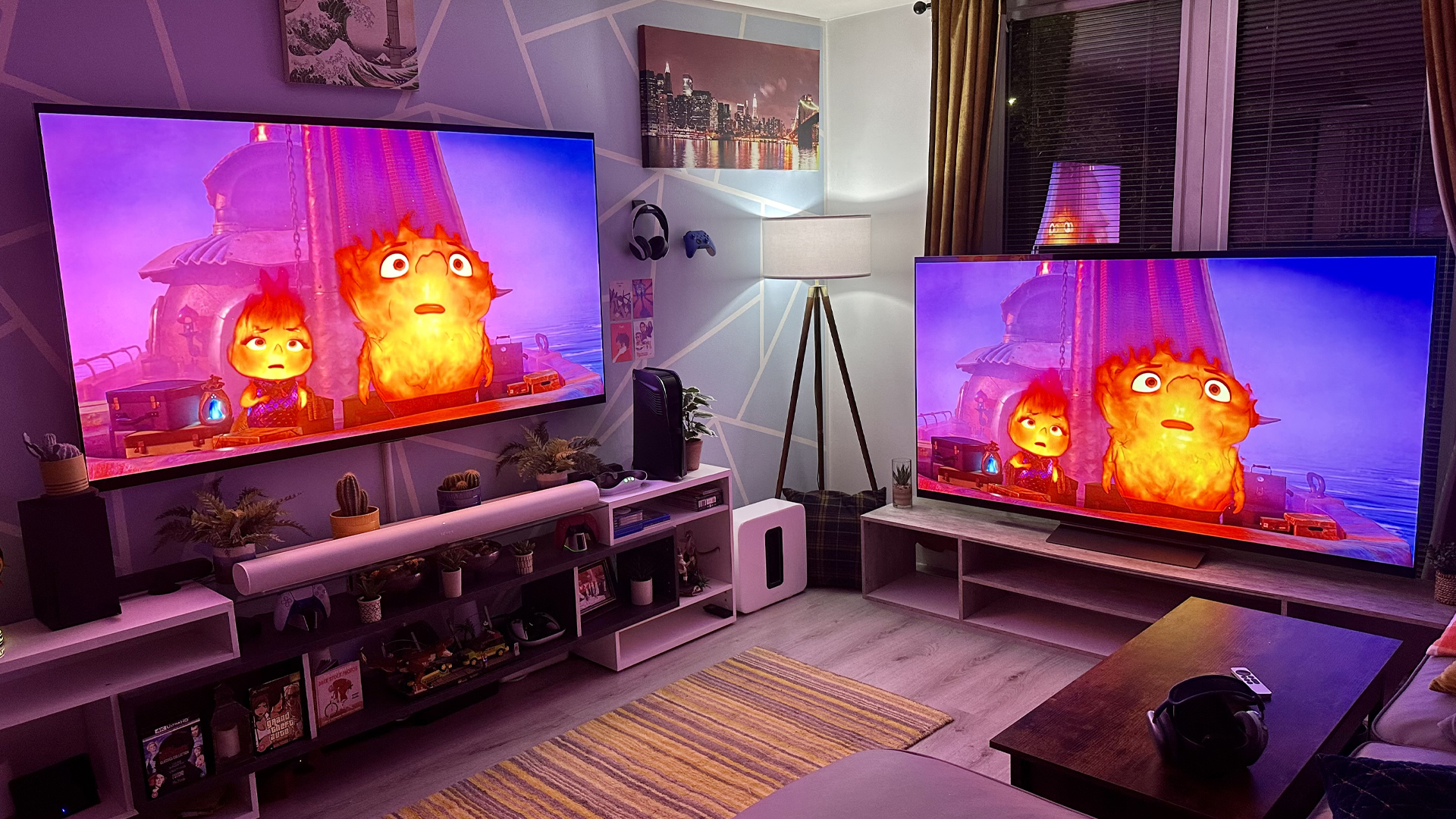The LG G3 is a game-changing OLED and the real ‘king of 4K TVs’ — here’s why
The best television ever made is an unbelievably good set

The LG G3 OLED TV has shot my credit card bills through the roof. And you know what? I couldn’t be happier. I may have amassed some seriously spicy debt to own what I consider to be the best TV in the world, but I don’t regret it.
Alright, so it may not have claimed the recent title of ‘King of 4K TVs’ based on Value Electronics' recent celebratory A/V event — that particular honor fell to the Sony Bravia XR A95L. Yet based on my obsessive eyeball tests, the G3 and its brightness-boosting Micro Lens Array tech makes it essentially a perfect TV, whether it wears an imaginary crown or not.
Here’s the kicker, though. The LG G3 OLED is a hell of a lot more expensive than last year’s still awesome LG C2 OLED, which is currently on sale ahead of the latest Prime Day bonanza.
I just bought the 77-inch version of the G3 (a model that currently costs $4,300/ £4,300). That’s obviously an astronomical amount to spend on a tech purchase, but hey, it’s brought me a colossal amount of happiness in the short time I’ve owned it, so I can just about accept the hideous debt.
(Not that I’m seriously suggesting you should get yourself into the sort of financially dicey situation I’ve chosen to plummet myself into in the quest to own an OLED TV of this caliber.)
As I said, the LG C2 OLED remains a sensational set that costs far less than its upgraded 2023 sibling, while the cheaper Samsung S90C is a television that can almost match the G3 in the brightness stakes at a substantially lower price point. For reference, during our tests over a 10% HDR brightness window, the S90C hit a super respectable 1,073 nits, while LG’s flagship TV has set the bar with an incredible 1,361 nits.
Bright future

Historically, brightness (especially in real-world terms where many of us have to deal with sun-filled living rooms) has long been OLED as a technology’s only real weakness. The LG G3 covers up this long-time blemish thanks to two key factors. The first is the previously mentioned boost in brightness thanks to MLA tech, which is genuinely transformative.
The second is more subtle, but also easy to appreciate if you live in a house/apartment that is constantly plagued by reflection-courting rays during the summer months. The LG G3 OLED boasts a new form of anti-reflective coating that does an amazing job of cutting down upon distracting reflections. In terms of boosting real-world picture vibrancy, I’d argue it’s just as big a deal as LG’s new MLA screen, which maxes out brightness thanks to billions of convex lenses being placed on top of its OLED panel.
I found myself in the unique (and slightly unhinged) situation of being in possession of both a 77-inch version of the LG C2 OLED and the same-sized LG G3 while I was in the process of selling the former. During this obsessive screen-scanning week, I ended up taking dozens of shots to convince myself that the brightness boost the G3 offered over the C2 really was worth the bank balance-shattering investment.
For 90% of OLED lovers out there, the difference probably won't be enough to justify the upgrade, considering the costs involved. Such is my A/V obsession though, once I’ve seen a piece of tech that’s even a little better than what came before, there’s no going back.
And make no mistake, it’s incredibly easy to spot just how much brighter the LG G3 is over the C2 once you've been in the presence of both TVs for a few hours.
MLA lights the way

The numbers paint a transformative picture my eyeball tests immediately confirm. Stick both sets in Vivid mode, and the resulting 1,361 nits of the G3 compared to the 800 nits of the C2 is truly game-changing. Considering this year’s LG C3 OLED is more or less a match for the C2 when it comes to HDR brightness, it makes the LG G3 the undisputed king of the South Korean firm’s OLED line-up.
It’s not just a matter of MLA-boosting brightness that makes the LG G3 OLED such a sensational set, though. I may not have hard data to back this up, but having compared the C2 and G3 side-by-side for days, I can confidently state the image upscaling of the latter is significantly better.
As much as I adore my Nintendo Switch OLED, I found the handheld hybrid to be all but unplayable on my 77-inch C2. When your average Switch game clocks in at around 900p in Docked mode, and with Nintendo’s continued resistance to implementing anti-aliasing techniques in even its biggest games, playing my Switch on my former gargantuan OLED was often rough.
Happily, that’s not the case with the LG G3 OLED.
The LG G3 the undisputed king of the South Korean firm’s OLED line-up"
So improved is the image upsampling on LG’s high-end TV, games like Super Mario Odyssey look soooo much cleaner on the G3 compared to the C2.
Admittedly, I use the Marseille mClassic Upscaler to boost my Switch’s native resolution, but having used the device on both TVs, I can effortlessly say the G3 still makes 1080p signals and below look vastly superior to last year’s line-up of LG OLEDs.
So much so, when I was recently playing the wonderful The Legend of Zelda: Tears of the Kingdom on my new TV, the image was smooth enough it could almost have passed for one of the best PS5 games.
So yes, the LG G3 OLED is the best TV the South Korean company has ever made. In my books, it's also the best television in history. If you can afford the more reasonably priced LG G3 55-inch OLED on sale at Amazon for $1,896, I'd recommend if without hestitation. And if you've just come into some serious cash, hot damn is the 77-inch model a sight to behold.
More from Tom's Guide
Sign up to get the BEST of Tom's Guide direct to your inbox.
Get instant access to breaking news, the hottest reviews, great deals and helpful tips.

Dave is a computing editor at Tom’s Guide and covers everything from cutting edge laptops to ultrawide monitors. When he’s not worrying about dead pixels, Dave enjoys regularly rebuilding his PC for absolutely no reason at all. In a previous life, he worked as a video game journalist for 15 years, with bylines across GamesRadar+, PC Gamer and TechRadar. Despite owning a graphics card that costs roughly the same as your average used car, he still enjoys gaming on the go and is regularly glued to his Switch. Away from tech, most of Dave’s time is taken up by walking his husky, buying new TVs at an embarrassing rate and obsessing over his beloved Arsenal.
-
Tanquen "The numbers paint a transformative picture my eyeball tests immediately confirm. Stick both sets in Vivid mode, and the resulting 1,361 nits of the G3 compared to the 800 nits of the C2 is truly game-changing. Considering this year’s LG C3 OLED is more or less a match for the C2 when it comes to HDR brightness, it makes the LG G3 the undisputed king of the South Korean firm’s OLED line-up."Reply
I did the same tests with the LG 77 C9 and with Vivid mode and some standard HD I could see a little more brightness but in HDR and Dolby Vision shows it was rare to see any differences. I had them side by side and most of the time when I thought the G3 was brighter I just had pause the video and look back and forth a bit to find that they looked the same. Because of the differences in C9 and G3 color temperature settings the C9 would even look brighter in some parts. The only real example I could find in a UHD 4k Blu-ray was the newer DreamWorks intro for the Puss in boots the Last Wish, when the crescent moon is floating around it is brighter on the G3 but that was about it. Even in bright daylight scenes they just looked the same as the HDR info was never asking for more that either set could handle.
In addition I got one of the G3s that makes pops and snap sounds randomly the whole time it's on, now after a few months. Mostly I wish I had just kept the C9. I just got taken in by all the talk over the years that the OLEDs are not bright enough for bright rooms and so on. If you want to use Vivid mode that changes a bit more than just the brightness or feal you need brighter standard HD it may be worth it but if you feel like you are missing out on more detail in HDR or Dolby Vision with more color accurate settings than Vivid, I don't think you are. Again, with the same 4k UHD Blu-ray side by side it's real struggle to see any deference between the C9 and G3.
Pic of my side by side setup. -
NTGD It may just be a YMMV situation, went from 55 C1 to a 55 G3 and there is a big difference to me, also have a 55 G2 available that I rarely use now because I love the extra pop it gives(and the misses took over the room it is in helping to "justify" the G3 purchase in the first place). My comparison isn't apples to apples because I did not like using vivid on either the C1 or G2 but something about how vivid with some tweeks looks on the G3 just really does it for me. My totally unscientific brain thinks maybe the extra brightness makes everything still look good without looking overblown and washed out in vivid like the older sets did.Reply -
Apple Jackson I have zero issues with a C1 (I'm not about to upgrade these TVs like my phone every year or 2). Are you watching in direct sunlight or something?Reply
